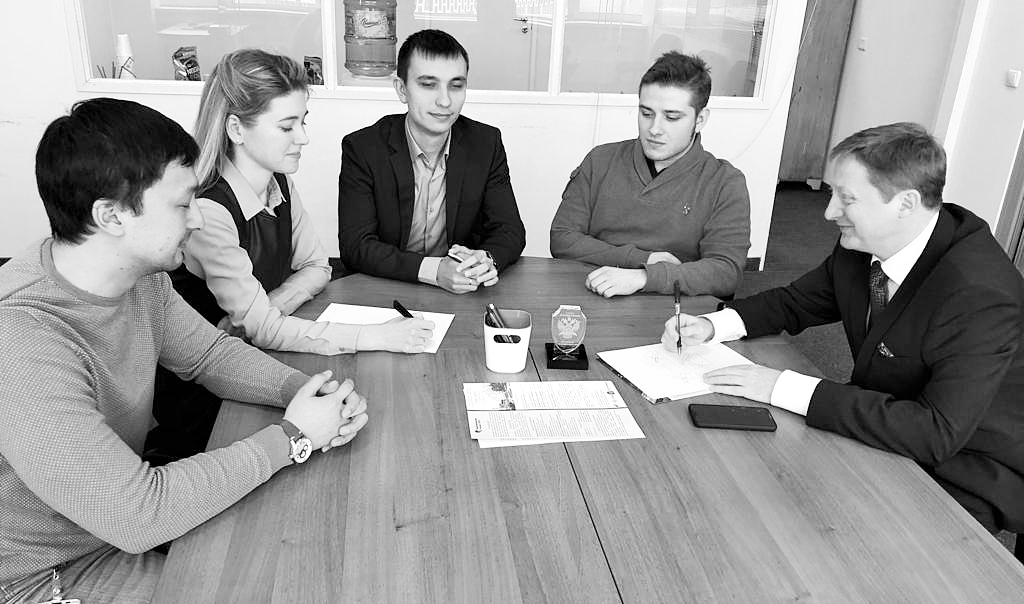CYBER-PHYSICAL SYSTEMS
 |
|
Roman V. Meshcheryakov, Head of Laboratory No. 80 |
The Laboratory of Cyber-Physical Systems was established in June 2018. Roman V. Meshcheryakov, Dr. Sci. (Eng.), Prof. of the Russian Academy of Sciences, was appointed the Head. The Laboratory has over 20 employees.
Cyber-Physical Systems (CPS) combine calculations, networks, and physical processes. They consist of an environment, sensors, computing elements, and actuators in which computing elements monitor and control physical processes using the feedback principle; the processes occurring in physical systems affect calculations. There are close communication and coordination between computational and physical resources in such systems.
The development of cyber-physical systems is inextricably connected with the progressive technologies of recent decades, such as fog and cloud computing, the Internet of Things (IoT), machine-to-machine (M2M) interaction, and intelligent analysis and recognition. Existing solutions are combined under a new concept and complemented by new cybernetic approaches to solve major optimization problems in production, energy, transport, agriculture, and other key fields.
Laboratory’s research areas cover the fundamentals of cyber-physical systems and the issues of control and safe operation of robotic systems.
The fundamentals of cyber-physical systems:
- Collaborative robotic systems.
- The quality of the human-machine interface in special conditions.
Control of robotic systems:
- Theoretical foundations of control of robotic systems.
- Models, algorithms, and software for information processing in robotic systems.
- Features of using robots in the IoT infrastructure.
- Group robotics. Decentralized control.
Safe operation of cyber-physical systems:
- Secure information exchange protocols in heterogeneous robotic systems.
- Regulation of the development of robotic systems with artificial intelligence.
- Trusted interaction in robotic systems.
- Protection of control systems in robotics.
An important applications-oriented area of Laboratory’s activities is the development of environmental monitoring systems for various man-made spaces using new technologies in robotics, data transmission networks, and intelligent analysis. Promising research is carried out to create mathematical support and software for robotic systems control and create virtual polygons. Laboratory’s employees participate in developing models, algorithms, and software tools for information processing in complex heterogeneous systems and developing protocols and security and data exchange tools in IoT systems.
The development of cyber-physical systems covers an extensive stratum of works on new methodological foundations for intelligent robotic production management (smart factory) and the interaction of the environment with computational resources. Nowadays, the expected dissemination of cyber-physical manufacturing systems needs the development of theoretical and methodological platforms for studying the interaction of physical and computational components. New analytical methods are also required. These aims guide Laboratory’s activities.
Laboratory’s projects were supported by the Russian Foundation for Basic Research (RFBR). Note the RFBR project devoted to developing scientific and technical solutions for secure M2M data exchange between the agents of mobile robotic groups with network-centric control. Group control of robots interaction will yield new approaches to forming and equipping wide-purpose cyber-physical systems (production, health care, energy, agriculture, transport, and others).
Intelligent analysis and data processing in systems with heterogeneous objects is another topical area of Laboratory’s research. The project on recognizing the signs of aggression and psychological pressure in heterogeneous Internet content was also supported by the Russian Foundation for Basic Research. This project is interdisciplinary and is carried out jointly by the Laboratory and scientists from other institutes. The goal is to create a socio- cyber-physical content monitoring system for counteracting destructive impacts on users.
Among the socially significant projects, note the idea proposed by a group of Laboratory employees: develop multi-agent systems (swarms) of unmanned aerial vehicles (UAVs) to search for people lost in the forest. This work is extremely significant, and the corresponding problem is highly relevant for Russia. With the possibility of long-term automatic flight, a group of UAVs equipped with GPS, an evasion system, and an adaptive learning camera for pattern recognition will find people faster and more efficiently by automating several complex processes.
Testing of robotic systems developed in the Laboratory of Cyber-Physical Systems and other departments of the Institute requires creating conditions close to the real environment. Laboratory’s employees are working to create a polygon with fixed and varying conditions of the real environment. Implementing the physical polygon within the Institute’s walls will increase the efficiency and reduce the cost of several important experiments and research. Moreover, the polygon will become an additional platform for educational and cognitive activities and experience exchange.
Laboratory’s employees are active in scientific and organizational work as members of the editorial boards of several Russian and foreign peer-reviewed journals and members of the program committees of international conferences.
 |
